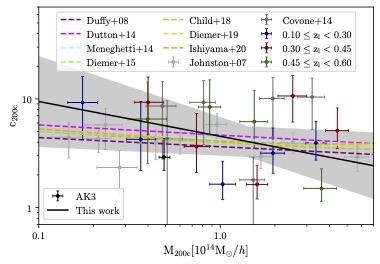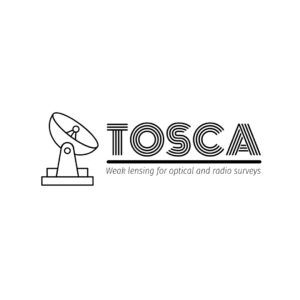| Authors: | L. Ingoglia, G. Covone, M. Sereno, ..., S. Farrens, et al. |
| Journal: | MNRAS |
| Year: | 2022 |
| DOI: | 10.1093/mnras/stac046 |
| Download: | ADS | arXiv |
Abstract
Galaxy clusters are biased tracers of the underlying matter density field. At very large radii beyond about 10 Mpc/\textit{h}, the shear profile shows evidence of a second-halo term. This is related to the correlated matter distribution around galaxy clusters and proportional to the so-called halo bias. We present an observational analysis of the halo bias-mass relation based on the AMICO galaxy cluster catalog, comprising around 7000 candidates detected in the third release of the KiDS survey. We split the cluster sample into 14 redshift-richness bins and derive the halo bias and the virial mass in each bin by means of a stacked weak lensing analysis. The observed halo bias-mass relation and the theoretical predictions based on the \\Lambda\CDM standard cosmological model show an agreement within \2\sigma\. The mean measurements of bias and mass over the full catalog give \M_{200c} = (4.9 \pm 0.3) \times 10^{13} M_{\odot}/\textit{h}\ and \b_h \sigma_8^2 = 1.2 \pm 0.1\. With the additional prior of a bias-mass relation from numerical simulations, we constrain the normalization of the power spectrum with a fixed matter density \\Omega_m = 0.3\, finding \\sigma_8 = 0.63 \pm 0.10\.




